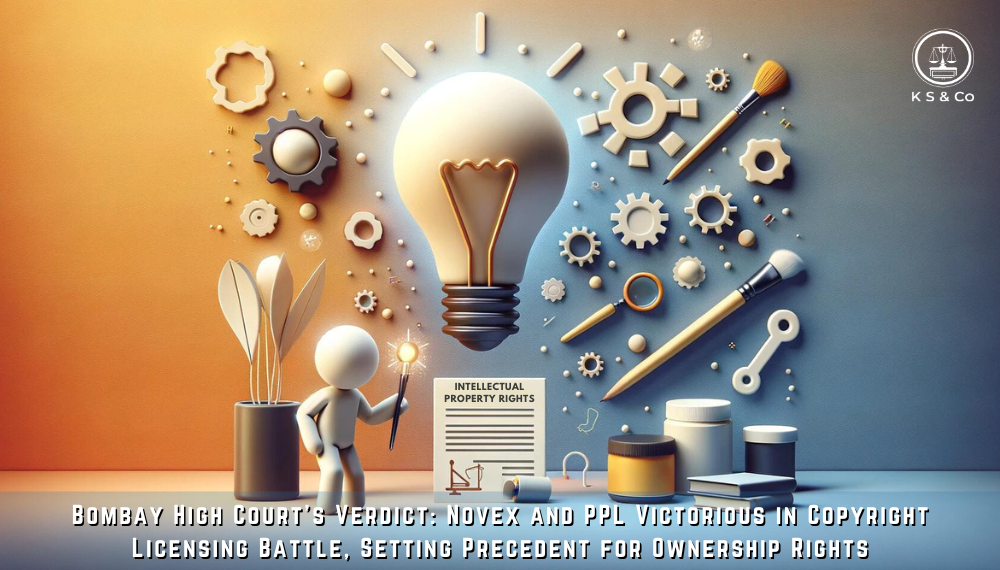Surrogate advertising is used to endorse a brand or product, that is otherwise restricted, in the disguise of a substitute product or brand extension. In India, surrogate advertising of tobacco, liquor, pan masala and gutka takes place due to restrictions on the sale and marketing of these products.
India has always been a lucrative market for doing business and has around 267 million active tobacco users. Furthermore, according to a UN Report, India has the world’s largest youth population with 356 million people between the ages of 10-24. Therefore, it becomes an important market for intoxicants and tobacco products.
It has been observed that Music CDs, Soda or water have been used to promote whiskey or vodka brands. For Instance, “Men will be Men” is a very popular slogan, wherein, Imperial Blue promotes its music CD’s
The nature of surrogate advertising may change with the new Draft Central Consumer Protection Authority (Prevention of Misleading Advertisements and Necessary Due Diligence for Endorsement of Advertisements) Guidelines, 2020 released by the Ministry of Consumer Affairs for comments on September 4th, 2020. The said guidelines broadly focus on protection of consumers by checking misleading advertisements.
Existing Guidelines and Advisories
On the 15th of September 2020, the Ministry of Information and Broadcasting (MIB) issued an Advisory highlighting the laws in place for surrogate marketing. The MIB cited repeated complaints and references to surrogate advertisements of prohibited products. The relevant provisions cited in the said advisory include:
- Rule 7(2)(viii)(A) of the Advertising Code under the Cable Television Network Rules, 1994 prohibits any direct or indirect advertisement of cigarettes, tobacco, wine, alcohol, or any other intoxicant.
- Furthermore, Rule 7(2)(viii)(A) also provides that any such advertisement has to be previewed and certified by the Central Board of Film Certification (CBFC) to check its suitability.
The Advertising Standard Council of India (ASCI) is a voluntary, self-regulatory council formed to ensure that advertising activities in India are truthful and honest and with a sense of social responsibility. Section 6 of its rule’s states ‘Advertisements for products whose advertising is prohibited or restricted by law or by this code must not circumvent such restrictions by purporting to be advertisements for other products the advertising of which is not prohibited or restricted by law or by this code.’ The criteria for verifying the content of advertisement to be an indirect or direct promotion of a restricted product has been given as follows:
- The visual content of the advertisement must depict only the product being advertised and not the prohibited or restricted product.
- The ad must not in any case promote the direct or indirectly prohibited or restricted products.
- The advertisement must not create any nuances or phrases promoting prohibited products.
The content of section 6 of ASCI rules are similar to that of the Cable Television Network Rules 7(2)(viii) which provides certain rules for the promotion of brand names or logos that indulge in the selling or manufacturing of cigarettes, tobacco, wine, alcohol etc. and mandate that they follow certain conditions:
- advertisement must depict only the product being advertised and not the prohibited products in any form or manner
- The advertisement must not make any direct or indirect reference to prohibited products;
- The advertisement must not contain any nuances or phrases promoting prohibited products;
- The advertisement must not use particular colours and layout or presentations associated with prohibited products
- The advertisement must not use situations typical for promotion of prohibited products when advertising the other products
Therefore, this advisory has been issued to create awareness among the manufacturers and sellers of restricted products to strictly follow the stipulated rules and ensure their advertisements are approved by the CBFC.
New guidelines mandates that every brand involved in manufacturing or promoting liquor/tobacco and like products shall be put under scrutiny. The guidelines shall require brands to go through a process of mandatory scrutiny where, the CBFC shall check as to whether these surrogate products are actually launched or are using surrogate advertising to promote their respective parent company.
Draft Guidelines on Prevention of Misleading Advertisements
On September 4th 2020, the Ministry of Consumer Affairs, Food and Public Distribution issued a notice and called for suggestions on the Central Consumer Protection Authority (Prevention of Misleading Advertisements and Necessary Due Diligence for Endorsement of Advertisements) Guidelines, 2020 (Draft Guidelines). The suggestions were invited till 18th September 2020.
The Draft Guidelines were broad and made reference to several terms namely Comparative advertising, Bait advertising, Surrogate advertising, Puffery and Prohibited advertisements. It also examines the role of expert endorsements and gives guidelines for any and all endorsements of products.
With regard to surrogate advertisements, the Draft Guidelines put in place certain checks. It states that goods and services whose advertising is otherwise prohibited shall not circumvent these restrictions by purporting to be advertisements of goods and services that are not prohibited or restricted.
While judging whether or not a particular advertisement is an indirect advertisement for a product whose advertising is restricted or prohibited, due attention is to be paid to the following:
- whether the unrestricted good or service which is purportedly sought to be promoted through the advertisement, is produced and distributed in reasonable quantities, having regard to the scale of the advertising in question, the media used, and the markets targeted;
- whether there exists in the advertisement in question, any direct or indirect indications, which could suggest to consumers that it is a direct or indirect advertisement for the good or service whose advertising is restricted or prohibited by law; and
- the mere use of a brand name or company name that may also be applied to a good or service whose advertising is restricted or prohibited is not a reason to find the advertisement in question objectionable, provided that the advertisement is not otherwise objectionable as per the provisions set out in these guidelines.
With the introduction of this draft, manufacturers have to keep an eye on its associated product’s production too. If these guidelines come into effect, brands will have to be careful and check whether these are adequately produced and sold.
The draft guidelines clearly put in place certain parameters and states that the advertisement of the product produced and distributed must be in reasonable quantities, having regard to the scale of advertisement in question, the media used, and the market targeted. Thus, a chain of demand and supply has to be maintained if the manufacturer wants to use surrogate advertising as a tool to promote its primary products.
Clause 20 refers to Contravention of guidelines. It states that the provisions of the Consumer Protection Act, 2019 (35 of 2019) shall apply for any violation of the provisions of these guidelines.
Under Section 89 of the Consumer protection Act, 2019, any manufacturer or service provider who causes a false or misleading advertisement to be made which is prejudicial to the interest of consumers shall be punished with imprisonment for a term which may extend to 2 years and with fine which may extend to 10 lakh rupees; and for every subsequent offence, be punished with imprisonment for a term which may extend to five years and with fine which may extend to 50 lakh rupees.
Thus, in order to avoid legal complications, brands must try to use surrogate marketing within the confines of the guidelines by abiding with all the rules and provisions in that regard.
Way Ahead
However, over the years, companies in these restricted categories have started using ground activation campaigns and brand integrations to connect with their customers.
Taking an example, Bacardi’s House Party Sessions for Talent hunt where Bacardi has used music festivals to create a culture ecosystem and evolve its brand identity over the years by associating with music festivals. Singer Ritviz launched his highly popular ‘Udd Gaye’ song and it became an overnight sensation. The event, that provided a platform for young and talented budding artists to showcase their musical abilities, which was co-hosted by All India Bakchod, Nucleya and Bacardi. With restrictions in the AlcoBev category, Bacardi has always pushed the envelope using music to engage with their target audience.
Chocolates, Magnets, Glasses, soda openers, keychains etc. are adopted worldwide to promote brands. Hosting of talent shows, award functions, DJ nights and sponsoring concerts have also proved profitable.
Conclusion
There is a need for the government to consider the commercial interests and legitimate concerns of the liquor and tobacco companies. The alcohol industry contributes as much as 15% of a state’s total revenues through excise. Some in the industry believe that if a product is allowed to be manufactured and sold, it should be allowed to advertise as well. With stringent regulations and guidelines in place, brands have entered corporate films, web series, concerts, talk shows, and are working toward more innovative marketing strategies to address their key demographic of 18-35. Furthermore, the digital space, which is in its infancy and not yet heavily regulated, is leveraged by the tobacco and liquor industry for the promotion of their products. Therefore, instead of imposing any unreasonable ban on surrogate advertising, it would be in the best interest of regulators and government to work together to ensure that surrogate advertising reaches its target audience and that such advertising promotes healthy and responsible practices. This initiative would go a long way in improving relations between all stakeholders and would have the desired effect.
* Naman Gulecha is a student of RGNUL, Patiala





Leave a Reply